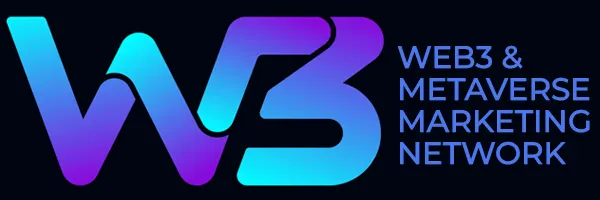Revolutionizing Brand Marketing with Web3 & Blockchain
In 2024, Web3, the decentralized internet powered by blockchain technology, is set to redefine how brands connect with consumers. As traditional marketing methods lose their appeal in an increasingly digital and privacy-focused world, Web3 offers marketers new opportunities to build meaningful relationships with their audience. By leveraging decentralization, tokenization, and greater user control, brands can develop more transparent, engaging, and immersive marketing strategies.
This article explores how Web3 technologies—like blockchain, non-fungible tokens (NFTs), decentralized finance (DeFi), and the metaverse—will transform the way brands market themselves in 2024. We will also look at the advantages Web3 offers over traditional marketing models, and practical examples of how brands can use these innovations to establish a powerful presence in a digital-first economy.
The Shift from Web2 to Web3: A New Marketing Landscape
Web2, the current version of the internet, is centralized, with power and data primarily controlled by large platforms like Google, Facebook, and Amazon. These platforms dominate digital advertising, which relies heavily on user data and targeted ads. However, data privacy concerns, ad fatigue, and growing consumer awareness have led to diminishing returns for traditional Web2 marketing strategies.
Web3, built on blockchain and decentralization, changes this model entirely. It allows users to own their data, engage with brands more transparently, and participate in decentralized ecosystems. This shift creates new pathways for brands to interact with customers, putting greater emphasis on trust, community, and personalization.
Key Web3 Technologies Impacting Brand Marketing
Before diving into how Web3 can be leveraged in marketing, let’s look at the key technologies that are driving this change.
1. Blockchain Technology
Blockchain is the foundation of Web3. It’s a decentralized, transparent ledger that allows for secure, trustless transactions and data exchanges. In marketing, blockchain can be used to verify authenticity, create transparent supply chains, and enable peer-to-peer (P2P) commerce.
2. Non-Fungible Tokens (NFTs)
NFTs are unique digital assets that represent ownership of a specific item or piece of content, typically stored on a blockchain. In marketing, NFTs can be used to create digital collectibles, limited-edition products, and exclusive experiences for customers, all while fostering a stronger emotional connection between the brand and its community.
3. Decentralized Finance (DeFi)
DeFi platforms offer decentralized financial services, removing intermediaries like banks. For brands, DeFi can provide new ways to reward customers through tokenized loyalty programs, staking, or decentralized payment options that empower consumers with more control over their finances.
4. The Metaverse
The metaverse is a virtual world where users can interact with each other and with digital environments. Brands can establish virtual storefronts, offer immersive experiences, and build communities in the metaverse, creating novel ways to engage customers and elevate brand loyalty.
Also, read – Web3 Marketing: An Intriguing Paradigm Shift in Brand-Consumer Relationships In 2024
How Web3 Can Transform Brand Marketing in 2024
Web3 presents numerous opportunities for brands to innovate their marketing strategies. Here’s how it can help businesses grow and engage with their audience in 2024.
1. Building Trust and Transparency Through Decentralization
One of the most significant challenges for brands in today’s digital landscape is trust. Consumers are increasingly skeptical of how brands collect, use, and monetize their data. Web3 addresses this issue by offering transparency and giving users more control over their personal information.
Brands that adopt blockchain-based marketing models can create transparent and verifiable interactions with their audience. For instance:
- Blockchain-verified products: Brands can use blockchain to authenticate the origin, quality, and sustainability of their products, providing customers with transparent, verifiable information.
- Decentralized ad platforms: Web3 enables brands to bypass traditional ad platforms, directly connecting with consumers without intermediaries. Decentralized platforms like Brave reward users with tokens for viewing ads, ensuring that consumers are compensated for their attention and that brands engage with genuine audiences.
By embracing transparency, brands can rebuild trust, differentiate themselves in competitive markets, and foster deeper relationships with consumers.
2. Enhanced Customer Loyalty with Tokenized Rewards
In Web3, brands can create tokenized loyalty programs that provide greater value and flexibility for customers. Instead of earning points that can only be redeemed for specific products or services, consumers can earn tokens that have broader utility within a decentralized ecosystem.
For example:
- Tokenized rewards programs: Brands can issue loyalty tokens that are not just limited to purchases but can also be traded, staked, or used across different platforms. These tokens can grow in value over time, giving customers an incentive to hold and engage with the brand.
- NFT-based rewards: Exclusive NFTs can be offered as rewards for brand loyalty, providing customers with unique, digital assets that they can collect, trade, or sell. These NFTs could represent limited-edition merchandise, special access to events, or personalized experiences, turning brand loyalty into a tangible, valuable asset.
Tokenized loyalty programs incentivize customers to remain engaged with the brand over the long term, while also offering flexibility and a sense of ownership that traditional loyalty programs cannot match.
3. Creating Engaging Experiences with NFTs and Digital Collectibles
In 2024, NFTs will be a central component of Web3 marketing strategies. Brands can use NFTs to create memorable experiences and forge emotional connections with their audience. Digital collectibles, limited-edition items, and exclusive content can be offered as NFTs, creating a sense of scarcity and exclusivity.
Here are a few ways NFTs can be used in marketing:
- Exclusive access and membership: Brands can issue NFTs that grant holders access to exclusive content, events, or products. For example, fashion brands might release NFT-based invitations to private runway shows or early access to limited-edition items.
- Digital merchandise: Brands can create unique, branded digital collectibles or wearables for use in virtual worlds or games. These NFTs can enhance brand visibility in digital environments, offering customers a way to express their brand loyalty in the metaverse.
- Gamification: Brands can introduce NFTs as part of a gamified experience, where users can collect, trade, or earn rewards for completing tasks or engaging with the brand in creative ways. This could be integrated into social media campaigns, virtual scavenger hunts, or interactive games.
By creating engaging and valuable experiences through NFTs, brands can foster a stronger connection with their audience while embracing the growing trend of digital ownership.
4. Leveraging the Metaverse for Immersive Brand Engagement
The metaverse is expected to be a central focus of brand marketing in 2024. With immersive virtual worlds like Decentraland, The Sandbox, and Meta’s Horizon Worlds gaining traction, brands can create virtual storefronts, interactive experiences, and events to engage with customers in entirely new ways.
Brands can leverage the metaverse to:
- Create virtual showrooms: In the metaverse, brands can build virtual spaces where customers can explore products, try on digital wearables, or interact with the brand in immersive environments. These virtual showrooms allow for experiential marketing that transcends the limitations of physical spaces.
- Host virtual events: The metaverse enables brands to host concerts, fashion shows, product launches, or conferences in virtual environments. This allows for greater audience participation, regardless of geographic location, and offers a novel way to create buzz around new products or services.
- Collaborate with influencers: Influencer marketing in the metaverse will take on new dimensions. Brands can partner with virtual influencers or prominent figures in the metaverse to create unique branded experiences, increasing visibility and reaching new audiences in virtual worlds.
The metaverse presents brands with a powerful opportunity to create unforgettable, immersive experiences that foster deeper engagement and brand loyalty.
5. Decentralized Content Creation and Community Building
One of the core principles of Web3 is decentralization, which empowers users to create and share content without relying on centralized platforms. Brands can harness this shift by building decentralized communities where customers and creators can co-create content and participate in brand development.
This can be achieved through:
- Decentralized Autonomous Organizations (DAOs): Brands can create DAOs, where community members have a say in decision-making processes related to the brand. For example, a fashion brand could allow its community to vote on the designs for its next collection, creating a more inclusive and participatory brand experience.
- User-generated content (UGC): In Web3, brands can incentivize their community to create and share content by offering rewards in the form of tokens or NFTs. This decentralized approach encourages greater engagement, as customers become active participants in the brand’s narrative.
- Collaborative campaigns: By decentralizing content creation, brands can launch collaborative campaigns where users contribute to the development of new products, marketing strategies, or experiences. These collaborative efforts foster a sense of ownership among community members, deepening brand loyalty.
Decentralized content creation allows brands to tap into the creativity and passion of their community, turning customers into brand advocates and co-creators.
6. Data Privacy and User Control
With Web3, users have greater control over their data, addressing one of the biggest challenges for brands in today’s data-driven marketing landscape. In Web3, consumers can choose how and when to share their data with brands, giving them more agency and reducing the friction caused by intrusive advertising.
Here’s how Web3 enhances data privacy in marketing:
- Opt-in advertising: Rather than relying on invasive tracking, Web3 allows brands to offer consumers the choice to opt into marketing campaigns. For example, users can be rewarded with tokens for agreeing to share their data or view personalized ads, ensuring that marketing efforts are more ethical and effective.
- Decentralized identity: Blockchain-based decentralized identity (DID) solutions allow users to manage their personal information more securely. Brands can build trust by offering personalized experiences based on user preferences, without compromising privacy.
By respecting consumer privacy and giving users control over their data, brands can build stronger, more trusting relationships with their audience.
Conclusion: Web3 is the Future of Brand Marketing
As we move into 2024, Web3 is set to revolutionize how brands market themselves in a digital world. With the advent of blockchain, NFTs, the metaverse, and decentralized finance, brands have new tools to create transparent, engaging, and personalized marketing strategies that resonate with today’s consumers.
Blockchain Magazine







